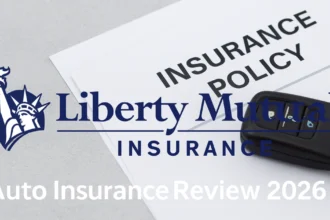As a dedicated NYC teacher, you’ve devoted your career to nurturing young minds and shaping the future generation. It’s only fitting that you take the necessary steps to secure your financial future and maximize the retirement benefits you’ve rightfully earned. This comprehensive guide will walk you through the intricate details of the NYC teacher retirement benefits, equipping you with the knowledge and strategies to make the most of your hard-earned benefits.
Understanding the Qualified Pension Plan (QPP)

The Qualified Pension Plan (QPP) is the backbone of your retirement benefits as an NYC teacher. Participation in this pension plan is mandatory for most educators, with contribution rates ranging from 3% to 6% of your salary, automatically deducted from your paycheck. While the contribution process is straightforward, calculating your potential pension payout can be a complex endeavor.
Your pension benefit is determined by factors such as your tier, service credit, age factor, and the average of your highest-earning years. To simplify the process, utilize the NYCERS Pension Benefit Calculator and refer to the step-by-step guide provided by Ostrich. This invaluable resource will guide you through the necessary inputs, ensuring you have an accurate estimate of your future pension income.
Vesting and the 10-Year Service Threshold
To be eligible for the QPP benefit, you must reach the crucial 10-year service threshold, also known as “vesting.” If you leave the NYC Department of Education (DOE) before reaching this milestone, you have a 7-year window to either return to the DOE or transfer your contributions to an Individual Retirement Account (IRA) to avoid paying taxes on the money.
Tier Determination and Its Impact
Your tier is determined by your employment start date with the NYC DOE. For example, if you joined on or after April 1st, 2012, you are classified as Tier 6, which offers the least generous pension benefits. Understanding your tier is crucial, as it dictates the specific calculations and requirements for your retirement benefits. Refer to the NYCERS website for detailed information on each tier’s provisions.
Maximizing the Tax-Deferred Annuity (TDA) Program
The Tax-Deferred Annuity (TDA) program is an invaluable retirement savings vehicle available to NYC teachers. Unlike the QPP, you must actively enroll in the TDA to take advantage of its benefits. By contributing to the TDA, you can make pre-tax contributions towards your retirement, allowing your money to grow tax-deferred until withdrawal.
Signing up for the TDA as early as possible is highly recommended, even if your initial contributions are modest. Utilize the TDA Calculator to determine the impact of various contribution percentages on your take-home pay. Remember, contributing to the TDA not only reduces your current tax burden but also provides a substantial nest egg for your golden years.
Supplementing with Individual Retirement Accounts (IRAs)
While the QPP and TDA are essential components of your retirement strategy, it’s crucial to diversify your savings by establishing your own Individual Retirement Account (IRA). Whether you choose a Roth IRA or a Traditional IRA, having a separate retirement account under your control adds an extra layer of security and flexibility to your retirement planning.
Roth IRAs offer tax-free growth and withdrawals in retirement, making them an attractive option for many educators. However, eligibility is subject to income limits, so be sure to consult the IRS guidelines to determine your eligibility.
Traditional IRAs, on the other hand, provide tax-deferred growth, similar to the TDA, but with the added benefit of personal control over the account and investments. The current combined contribution limit for Roth and Traditional IRAs is $6,500 for individuals under 50 and $7,500 for those aged 50 or older.
Accessing Your Retirement Funds
While early withdrawals from retirement accounts should be avoided whenever possible due to penalties and taxes, there are legitimate ways to access your funds before retirement age. These include taking out a loan from your TDA or QPP, requesting a hardship distribution for qualified expenses (such as buying a primary residence), or waiting until you reach the appropriate retirement age.
TDA and QPP Loans: Both the TDA and QPP allow you to borrow against your account balances, with loan limits ranging from 50% to 75% of your account value, depending on your tier and program. With a TDA loan, you essentially become your own lender, paying interest back into your account. Conversely, with a QPP loan, you borrow from the city’s pension funds and repay the city, with interest not credited back to your personal account.
Hardship Distributions: Hardship distributions are permitted for qualified expenses, such as purchasing a primary residence, when you can prove no other alternatives exist. While the 10% early withdrawal penalty is waived, you will still be required to pay taxes on the distributed amount.
Reaching Retirement Age: Once you reach the appropriate retirement age (typically 55 for pension distributions and 59½ for TDA and IRA withdrawals), you can begin accessing your retirement funds without penalties. However, it’s often advisable to delay distributions as long as possible to maximize the compounding growth of your investments and potentially increase your pension payout.
Required Minimum Distributions (RMDs): It’s important to note that once you reach age 72, you may be required to take Required Minimum Distributions (RMDs) from your retirement accounts, even if you haven’t chosen to access the funds yet. Failing to take RMDs can result in substantial penalties, so it’s crucial to stay informed and plan accordingly.
Conclusion
As an NYC teacher, you have access to a comprehensive retirement benefits package that can provide you with a secure financial future if leveraged effectively. By understanding the intricacies of the Qualified Pension Plan (QPP), maximizing your contributions to the Tax-Deferred Annuity (TDA) program, and supplementing with Individual Retirement Accounts (IRAs), you can create a well-rounded retirement strategy tailored to your specific needs.
Remember, retirement planning is a marathon, not a sprint. Start early, stay informed, and consult with financial professionals when needed. By taking proactive steps today, you can enjoy a comfortable and well-deserved retirement, knowing that your years of dedication to educating the next generation have been rewarded with a secure financial future.
Frequently Asked Questions (FAQs)
Can I opt-out of the Qualified Pension Plan (QPP)?
No, participation in the QPP is mandatory for most NYC teachers. Exceptions include some CUNY adjunct professors, para-professionals employed by the DOE, and certain participating charter schools where the pension plan is optional.
How do I calculate my potential pension benefit?
Use the NYCERS Pension Benefit Calculator and refer to the step-by-step guide provided by Ostrich to accurately estimate your future pension income based on factors like your tier, service credit, age factor, and highest-earning years.
What happens if I leave the NYC DOE before reaching 10 years of service?
If you leave before reaching the 10-year service threshold (vesting), you have a 7-year window to either return to the DOE or transfer your contributions to an IRA to avoid paying taxes on the money.
Can I contribute to both a Roth IRA and a Traditional IRA?
Yes, you can contribute to both a Roth IRA and a Traditional IRA, but the combined contribution limit for both accounts is $6,500 for individuals under 50 and $7,500 for those aged 50 or older.
What are the penalties for early withdrawals from retirement accounts?
Early withdrawals from retirement accounts before age 59½ typically incur a 10% penalty and are subject to income taxes. However, there are exceptions for hardship distributions and loans from your TDA or QPP, which may waive the penalty but still require tax payments.
In another related article, Navigating Your NYC Teacher Pension: Eligibility, Benefits, and Planning Ahead





